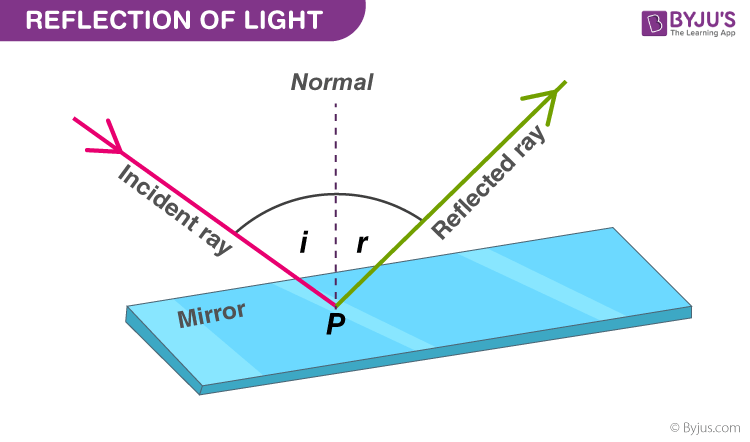
If all the parallel rays which are reflected from a plane surface are parallel then that reflection of incident rays is known as regular reflection. If all the parallel rays which are reflected from a plane surface are not parallel then that reflection of incident rays is known as irregular reflection. However, diffuse reflectors can still be useful as screens in certain imaging instruments such a screen needs to be placed in an image plane.Difference between regular and irregular reflection is as follows. In contrast to diffuse reflection, where random angular changes are introduced, the image information is preserved upon specular reflection. Specular reflections can be used for imaging – for example, in reflective telescopes. Here, the output angle can substantially deviate from the angle of incidence, and also depends on the optical wavelength, but there is again no diffuse reflection in the ideal case.

Reflections on Diffraction GratingsĪ modified form of specular reflection can occur on diffraction gratings. Therefore, a metal surface, for example, needs to be very carefully polished to obtain nearly perfect specular reflection. Condition for Specular Reflectionīecause the wavelengths of visible light are rather small (well below 1 μm), pure specular reflection requires a high degree of surface flatness – much more than for microwaves, for example.

(That can be a problem in the context of laser safety.) On the other hand, specular reflections remain unnoticed for an absorber if the reflected light misses his or her eyes. Specular reflections can appear much brighter than diffuse reflections, when seen from a large distance because the reflected light is concentrated to a smaller range of directions. There can be also a combination of specular and diffuse reflection an object with such properties exhibits specular highlights (depending on the illumination conditions) in addition to the appearance generated by diffuse scattering. That can be considered as the opposite of specular reflection: perfectly diffusing reflection. Particularly volume diffusers, but also some matte paints, tend to produce even a much wider angular distribution of scattered light, often even approaching the standard case of a Lambertian scatterer. With a substantially rough surface, causing significant scattering, there can be a substantial angular range, for example with a width of 10°. If the reflecting surface is nearly flat, but not completely flat, the output light may be spread over some range of angles that is called diffuse scattering. Other Kinds of Reflection, Involving Scattering of Light The common law of reflection (output angle = angle of incidence) is related to the fact that the component of the wave vector along the reflecting surface is preserved. For curved reflecting surfaces, one also obtains a specular reflection the angles of incidence and output are then measured against the local normal direction. That situation is usually found with high accuracy on various types of flat mirrors. Here, the angle of the reflected light, as measured against the surface normal, equals that angle for the incident light (see Figure 1). of polished metal or glass pieces, including cases with total internal reflection, or on surfaces of liquids. That kind of reflection is encountered on smooth surfaces, e.g. The classical type of light reflection is that of specular reflection, from the Latin word speculum ( mirror), or alternatively regular reflection. URL: Figure 1: Specular reflection at a flat surface, where the output angle equals the angle of incidence.

#REGULAR REFLECTION DEFINITION PHYSICS HOW TO#
How to cite the article suggest additional literature Encyclopedia > letter S > Specular reflection Specular Reflectionĭefinition: reflection of light where the angle of reflected light equals the angle of incident light, but on the opposite side of the surface normal


 0 kommentar(er)
0 kommentar(er)
